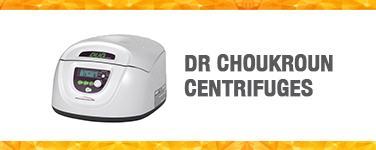Choukroun PRF Types for Dental Applications
PRF (Platelet Rich Fibrin) is a centrifuge product that can be prepared in-office using the patient’s autologous blood. An evolution of PRP (Platelet Rich Plasma), PRF is rich in growth factors. It can help to support and accelerate the healing process in dental patients.
The use of PRF in the dental office is increasing, especially with the heightened availability and cost-efficiency of the Choukroun PRF system.
There are several different types of PRF preparations that can be created chairside, each with shared and some unique benefits. Learn about PRF types and explore a complete range of PRF kits, centrifuges, instruments, and supplies.
Dental Implant Technologies is an authorized supplier of Choukroun PRF products in the United States.
What’s the Concept Behind PRF for Dental?
Choukroun PRF is a set of protocols that are designed to improve healing, increase the efficiency of the chairside process, and reduce the cost of dental procedures.
Because PRF is an autologous material, it is cost-effective to prepare chairside. Being autologous, it is also highly biocompatible with no risk of disease transmission or contamination from external sources.
Using PRF improves healing and can also increase the speed of bone regeneration. PRF materials can be combined with grafting materials, whether using autologous bone, allograft, xenograft, or synthetic products.
PRF protocols are open access. They can be applied with pre-set programs when using Choukroun PRF Centrifuges. The speed and duration of centrifugation determine the type of PRF created. There are three major PRF protocols available to dental clinicians today. We will explore each in detail.
The benefits of PRF (Platelet Rich Fibrin) include:
- Uses blood samples drawn from the patient.
- 100% biocompatibility with the donor patient.
- PRF provides more growth factors than PRP preparations.
- Is easy to prepare with the DUO Quattro centrifuge.
Potential uses include:
- PRF membranes for wound protection.
- PRF liquid for material hydration or direct injection to a wound site.
- PRF sticky-bone for better grafting performance.
I-PRF
Also known simply as IPRF, this is an injectable form of PRF that can be created in the centrifuge. Unlike the clots of other protocols, I-PRF is a viscous liquid that can be injected into the soft tissue or applied to grafting materials for both hydration and handling purposes.
PRF injections can support healing and recovery, increasing the number of available blood platelets and growth factors. If applied to grafting materials, I-PRF will spontaneously coagulate in two to three minutes. This can allow for the formation of putty or a thin membrane-type layer that can be conformed around a defect.
If not injected, I-PRF is best suited to crunch fragments and particulates.
A-PRF
A-PRF is created in a centrifuge from autologous blood. This is a type of spongy membrane rich in growth factors. Serum and red blood cells are removed when developing A-PRF in a centrifuge. The slower spinning speed used for the A-PRF protocol results in a membrane that can be compressed and manipulated to easily conform to a wound. A-PRF can be protected with a membrane barrier and is suitable for suturing. This is at the discretion of the clinician. A-PRF can be considered an effective resorbable membrane and may be used without a commercially manufactured membrane in some cases.
A-PRF (along with all types of PRF) contains more platelets than PRP when comparing microliters. A-PRF also contains leukocytes (white blood cells) and stem cells, which can improve the healing process with better and more predictable patient outcomes.
Clinicians seeking the best results that will grow their reputations can rely on A-PRF autologous membranes developed chairside.
L-PRF
L-PRF is another protocol that can be used in a chairside centrifuge. It has fewer growth factors than A-PRF but provides similar performance advantages. It can be used as a membrane or a sticky carrier (when cut and combined) for grafting materials.
L-PRF is used by clinicians around bone defects and may also be used around dental implants to increase cellular activity for healing. L-PRF and A-PRF preparations have the same handling characteristics. The membrane can be compressed, shaped, or cut to suit the defect and specific surgical case.
Browse a Complete Range of Products for PRF in Dentistry
From centrifuge devices to vials, instruments, and even blood draw equipment, Dental Implant Technologies stocks a comprehensive range of PRF Products.
The Choukroun PRF protocols have advanced dental surgery to provide biocompatible, autologous membrane and injectable solutions that hasten wound and graft healing and support positive patient outcomes. Browse our complete PRF range and order from our secure online store for delivery to any practice in the United States.


